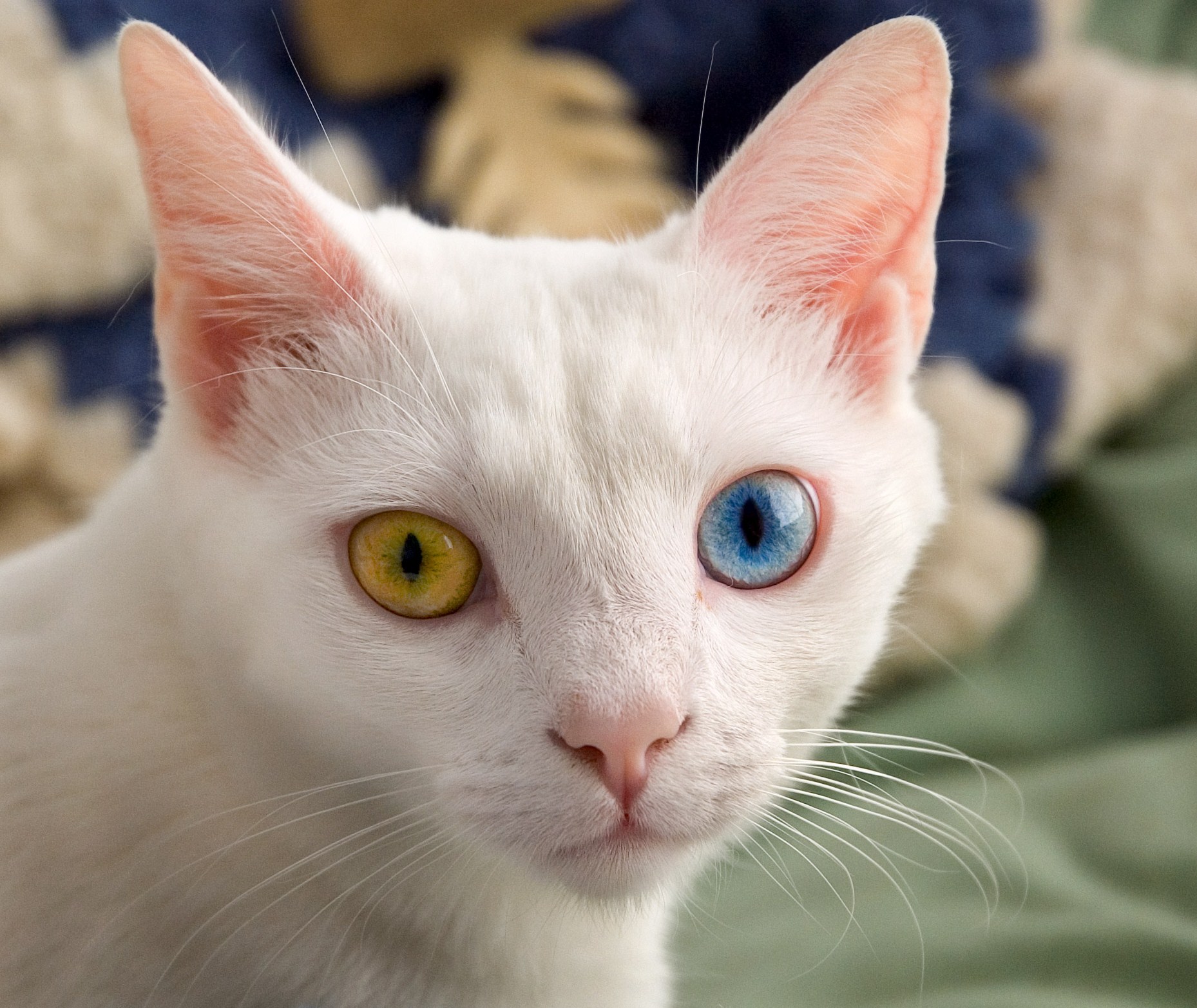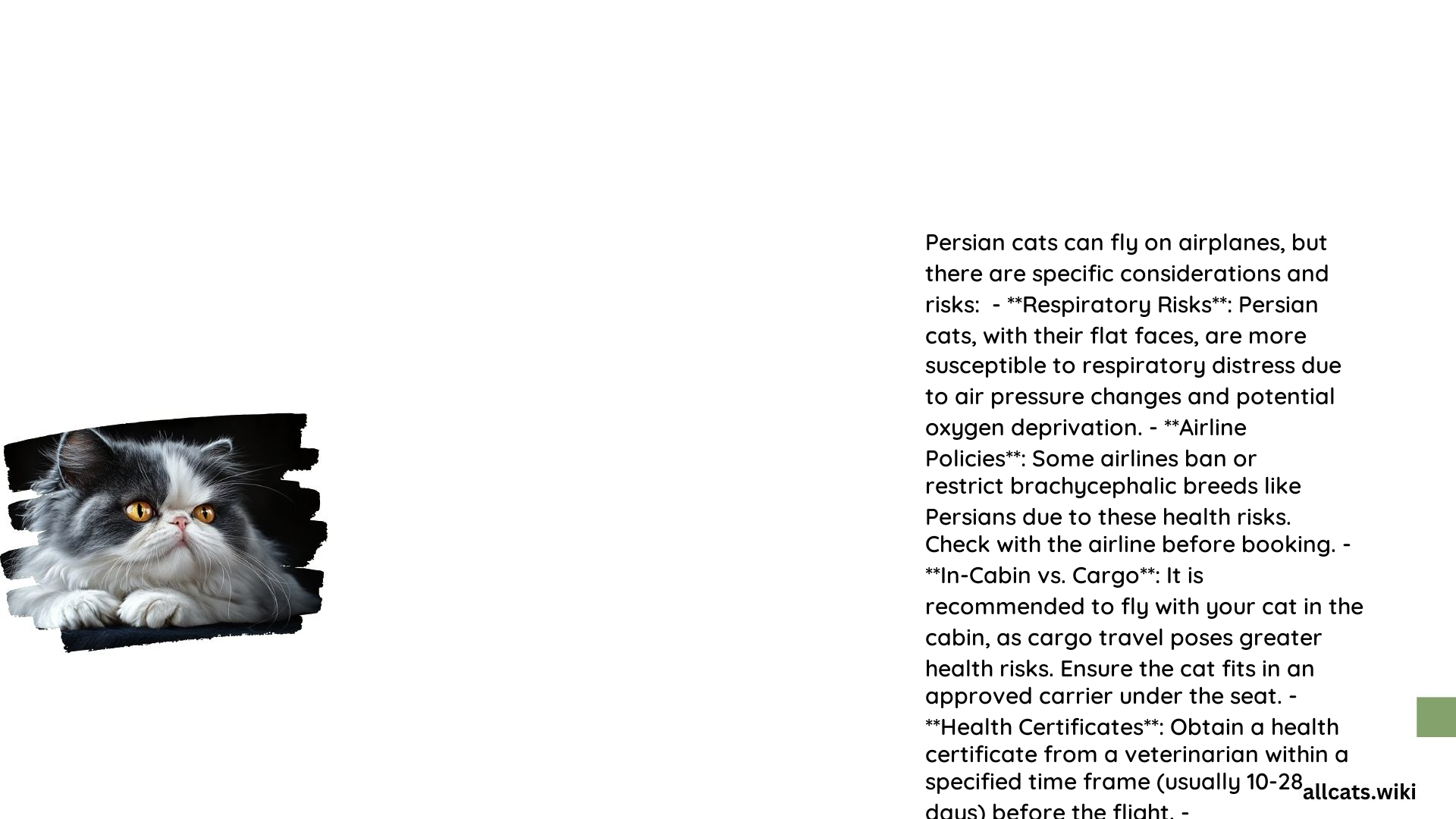Characteristics as Snub-Nosed Breeds

Persian cats, being brachycephalic (snub-nosed), are more susceptible to breathing difficulties due to their short muzzles and flat faces. This can make air travel particularly challenging for them, especially in the cargo hold where conditions can be less controlled compared to the cabin.
Do Airlines Allow Persian Cats to Fly In-Cabin?

Specific Requirements and Restrictions
- General Restrictions: Many airlines have specific restrictions or bans on flying brachycephalic breeds, including Persian cats, due to the health risks associated with air travel for these animals.
- In-Cabin Travel: If an airline does allow Persian cats to fly in-cabin, the cat must fit in a carrier that can be placed under the seat in front of you. The carrier must meet specific size requirements, and the cat must remain in the carrier during the flight.
- Example Restrictions: Turkish Airlines, for instance, prohibits Persian cats from flying, highlighting the need to check with the airline before booking.
What Are the Potential Risks Associated with Flying Persian Cats?
Health Concerns
- Respiratory Distress: The primary health concern for Persian cats is respiratory distress due to their brachycephalic nature. The pressure and air changes during flight can exacerbate breathing difficulties.
- Temperature and Pressure: While airplane cabins are pressurized and temperature-controlled, the cargo hold can have varying temperatures, which may not be ideal for sensitive pets.
Behavioral Issues
- Anxiety and Stress: Cats, especially those with anxious temperaments, may experience significant stress during flights, which can be exacerbated by the confined space and noise.
Environmental Factors
- Cargo Hold Risks: Flying in the cargo hold is generally riskier than in-cabin travel due to potential temperature fluctuations and the lack of direct supervision.
What Preparations and Steps Are Necessary for Flying with a Persian Cat?
Health Checks
- Health Certificate: Obtain a valid health certificate from a veterinarian, typically required within a specific timeframe before the flight (e.g., 7-10 days).
- Vaccinations and Microchipping: Ensure the cat is up-to-date on vaccinations and microchipped, especially for international travel.
Carrier Specifications
- Size and Comfort: Use an airline-approved carrier that allows the cat to stand, sit, and turn comfortably. For snub-nosed breeds, a slightly larger crate may be recommended to enhance air circulation.
- In-Cabin Carrier Dimensions: The carrier must fit under the seat in front of you, with specific dimensions varying by airline (e.g., 45 x 23 x 25 cm or 45 x 42 x 20 cm).
Travel Documentation
- Pet Passport: For international travel, a pet passport is often required, including documentation of anti-rabies inoculation and other necessary treatments.
- Additional Forms: Fill out and sign any required forms, such as the “Transport of animals in the cabin” form, and present them at check-in.
What Statistics and Recommended Products Can Help with Flying Persian Cats?
Safety and Comfort Statistics
- While there are no specific statistics on Persian cats alone, it is known that 2 million pets fly annually, with the vast majority arriving safely. However, brachycephalic breeds are at higher risk.
Recommended Products and Solutions
- Expandable Carriers: Using expandable carriers can help provide more space for the cat during layovers or under the seat, enhancing comfort.
- Pet-Friendly Airlines: Choosing airlines with good track records for pet travel and specific accommodations for brachycephalic breeds can mitigate risks.
In conclusion, flying with Persian cats can be challenging due to their brachycephalic characteristics, but with proper preparation, documentation, and the use of recommended products, it is possible to safely transport these feline companions by air. It is essential to thoroughly research airline policies, consult with a veterinarian, and prioritize the cat’s health and well-being throughout the travel process.
